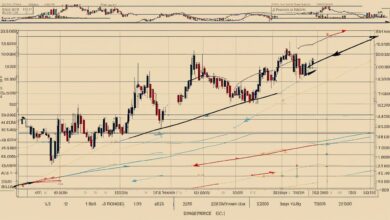Understanding and Trading Convertible Bonds with Options: A Hybrid Approach

Introduction
Convertible bonds are a unique investment strategy that combines elements of both debt and equity. They are fixed-income securities that can be converted into a predetermined number of the issuing company’s shares. This combination of features makes them important in the financial market, as they offer the potential for capital appreciation along with steady interest income.
Key takeaway: Learning how to trade convertible bonds using options can open up new opportunities for making profits and managing risks.
Understanding Convertible Bonds
Convertible bonds are fixed-income securities that offer a unique feature: the ability to be converted into equity shares of the issuing company. This hybrid nature provides investors with the stability of bonds and the potential for capital appreciation through stock conversion.
Key Features of Convertible Bonds
Conversion Option:
- Allows bondholders to convert their bonds into a predetermined number of equity shares.
- Provides flexibility to benefit from the company’s stock price appreciation.
Interest Payments (Coupons):
- Bondholders receive regular interest payments, typically semi-annually.
- These coupons provide a steady income stream until conversion or maturity.
Maturity Date:
- Set date when the principal amount of the bond is repaid if not converted into equity.
- Offers a safety net for investors who prefer fixed-income returns over equity exposure.
Conversion Ratio:
- Specifies how many shares a bondholder receives upon conversion.
- Often calculated as: Conversion Ratio = Par Value / Conversion Price.
- Example: A $1,000 par value bond with a $50 conversion price has a ratio of 20 shares.
Convertible bonds present an interesting investment characteristic by blending debt and equity features. This hybrid structure allows you to enjoy fixed income through interest payments while also providing an option to participate in the company’s equity growth potential.
However, it’s essential to understand that like any other financial instrument, convertible bonds come with their own set of challenges and risks.
For more insights on how convertible securities work and their benefits, you may want to explore resources from Calamos. Additionally, Credit Suisse offers comprehensive documentation on convertible bonds that could enhance your understanding further.

Benefits and Risks of Trading Convertible Bonds with Options
Trading convertible bonds with options provides several advantages for traders looking to enhance their income potential and manage risks effectively:
Advantages
- Enhanced Income Potential: By integrating call options into your strategy, you can amplify your gains in bullish market conditions. For instance, purchasing call options on the underlying stock of a convertible bond allows you to benefit from significant price increases without directly owning the stock.
- Downside Protection: Using put options can serve as a hedge against adverse price movements. If the stock price of the issuing company declines, put options can offset losses, providing a safety net that helps preserve capital.
- Diversification: Combining convertible bonds with options strategies creates a diversified investment portfolio. This hybrid approach allows you to spread risk across different asset classes, reducing exposure to any single market movement.
- Risk Management: Options provide flexibility in managing various types of risks. For example:
- Credit Risk: Selling covered calls on the underlying stock can generate additional income, which may help mitigate potential losses due to issuer default.
- Interest Rate Risk: Options can be used to hedge against interest rate fluctuations that might negatively impact bond prices.

Inherent Risks
While the benefits are substantial, trading convertible bonds with options also comes with its own set of risks:
- Interest Rate Fluctuations: Convertible bonds are sensitive to changes in interest rates. Rising rates can lead to lower bond prices, which could adversely affect your position if not properly hedged.
- Credit Risk: The possibility of the issuer defaulting on its obligations poses a significant risk. Even with protective measures like put options, the impact of an issuer’s default can be severe.
- Market Volatility: Stock prices can be highly volatile, impacting both the convertible bond and any associated options positions. Sudden market movements can lead to unexpected losses if positions are not actively managed.
Understanding these benefits and risks is crucial for traders aiming to master this hybrid investment strategy. Balancing potential rewards with inherent risks requires continuous monitoring and strategic adjustments based on market conditions.

Options Strategies for Trading Convertible Bonds Successfully
Traders can optimize their trades in the convertible bond market by employing specific options strategies. These techniques can enhance profitability and provide protection against adverse market movements.
Arbitrage Strategies: Exploiting Pricing Discrepancies
Arbitrage strategies involve taking advantage of pricing inefficiencies between convertible bonds and their underlying stocks. These strategies can help traders profit with minimal risk:
- Convertible Arbitrage: This involves simultaneously purchasing convertible bonds and shorting an equivalent number of shares of the issuing company’s stock. The goal is to profit from discrepancies between the bond’s conversion value and the current stock price.
- Example: If Company DEF’s convertible bond is undervalued relative to its current stock price, you could buy the bond and short DEF’s stock. As these prices converge over time, you stand to gain from the correction.
By leveraging these options strategies—call options for upside potential, put options for downside protection, and arbitrage strategies for exploiting pricing discrepancies—traders can navigate the complexities of the convertible bond market more effectively. Each strategy offers unique benefits and requires careful consideration of market conditions and individual risk tolerance.

Real-World Case Studies: Convertible Bonds and Options in Action
Tesla
Tesla’s convertible bonds have been a popular investment vehicle due to the company’s volatile yet upward-trending stock price. Traders have leveraged call options alongside their Tesla convertible bonds to maximize gains during bullish periods. For instance, by purchasing call options, traders can gain additional exposure to Tesla’s stock price increases without committing more capital. This strategy proved beneficial during Tesla’s rapid ascent in 2020, where the stock price surged over 700%.
Conversely, employing put options provided essential downside protection. In the case of market downturns or heightened volatility, these put options buffered potential losses on the convertible bonds by allowing traders to sell the underlying equity at predetermined prices.
Netflix
Netflix offers another compelling example. Its convertible bonds were particularly attractive during periods of significant content investment and global expansion. Traders used options strategies to navigate the fluctuating stock performance tied to quarterly earnings and subscriber growth metrics.
An effective strategy involved using covered calls, where traders holding Netflix convertible bonds also sold call options against them. This approach generated additional income from option premiums while still benefiting from any potential appreciation in Netflix’s stock price up to the strike price of the sold calls.
In instances when Netflix’s stock faced downward pressure, protective puts were employed. These puts acted as insurance policies, ensuring that traders could mitigate losses if Netflix’s stock dropped below a certain level.

Key Takeaways
These real-world examples with Tesla and Netflix illustrate both the lucrative opportunities and inherent challenges in trading convertible bonds with options. The dynamic nature of these hybrid strategies requires a keen understanding of market conditions and careful risk management.







